Human Orbital Spaceflights
![]()
International Flight No. 153STS-53Discovery (15)52nd Space Shuttle missionUSA |
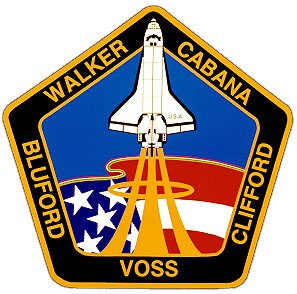 |
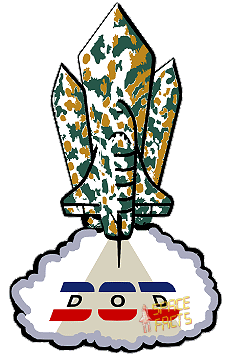 |
![]()
Launch, orbit and landing data
walkout photo |
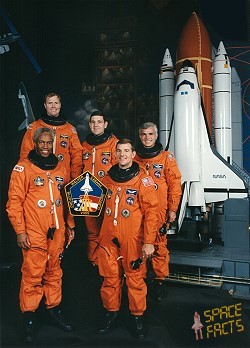 |
||||||||||||||||||||||||||||
alternative crew photo |
|||||||||||||||||||||||||||||
alternative crew photo |
Crew
| No. | Surname | Given names | Position | Flight No. | Duration | Orbits | |
| 1 | Walker | David Mathieson | CDR | 3 | 7d 07h 19m 47s | 116 | |
| 2 | Cabana | Robert Donald | PLT | 2 | 7d 07h 19m 47s | 116 | |
| 3 | Bluford | Guion Stewart, Jr. "Guy" | MS-1 | 4 | 7d 07h 19m 47s | 116 | |
| 4 | Voss | James Shelton | MS-2, EV-1, FE | 2 | 7d 07h 19m 47s | 116 | |
| 5 | Clifford | Michael Richard Uram "Rich" | MS-3, EV-2 | 1 | 7d 07h 19m 47s | 116 |
Crew seating arrangement
|
 |
|
||||||||||||||||||||||||
Hardware
| Orbiter : | OV-103 (15.) |
| SSME (1 / 2 / 3): | 2024 (5.) / 2012 (14.) / 2017 (7.) |
| SRB: | BI-055 / RSRM 28W |
| ET: | ET-49 (LWT-42) |
| OMS Pod: | Left Pod 04 (12.) / Right Pod 03 (16.) |
| FWD RCS Pod: | FRC 3 (15.) |
| RMS: | - |
| EMU: | EMU No. 2014 (PLSS No. 1008) / EMU No. 2020 (PLSS No. 1006) |
Flight
|
Launch from Cape Canaveral (KSC) and
landing on the Edwards
AFB, Runway
22. STS-53 was the final dedicated Department of Defense mission. Discovery carried a classified primary payload for the United States Department of Defense, two unclassified secondary payloads and nine unclassified middeck experiments. Discovery's primary payload, USA-89 is also known as "DOD-1", was the shuttle's last major payload for the Department of Defense. The satellite was the third launch of a Satellite Data System-2 military communications satellite, after USA-40 on STS-28 and STS-38's deployment of USA-67. The combined Shuttle Glow Experiment/Cryogenic Heat Pipe Experiment (GCP) was one of the secondary payloads. The Shuttle Glow (GLO) experiment used the Arizona Imaging Spectrograph (AIS) to investigate Shuttle/environment interactions such as atomic oxygen surface glow on the orbiter's tail and other surfaces and wake phenomena. The AIS observed the orbiter's orbital maneuvering system pods, OMS and reaction control system jet firings, waste water dumps and flash evaporative cooler system operations. The AIS had cameras and spectrographs to record in the ultraviolet, visible and infrared bands. The AIS was almost identical to the Infrared Background Signature Survey instrument which flew on STS-39. The AIS was mounted in the cargo bay to a hitchhiker small plate. The Cryogenic Heat Pipe (CRYOHP) experiment was a joint Department of Defense/NASA experiment to test advanced technology that will make it easier to reject excess heat from infrared sensors, instruments and space vehicles. The prime goal of the Cryogenic Heat Pipe experiment was to prove that cryogenic (very low temperature) heat pipes can reliably start up and operate at -351 to minus 198 degrees F (minus 213 to minus 128 degrees C). Supercold liquid oxygen served as the working fluid in CRYOHP instead of the water, ammonia or Freon used by most heat pipe concepts. The Orbital Debris Radar Calibration System (ODERACS) experiment should release six calibration spheres from Discovery. The spheres - two 6-inches (0.15 meter) in diameter, two 4-inches (0.10 meter) in diameter and two 2-inches (0.05 meter) in diameter - should be placed in a 175 nautical-mile-high (377 kilometer) orbit when they are ejected from the Shuttle's cargo bay. The primary objective of the ODERACS experiment was to provide a source for fine-tuning of the Haystack Radar, located in Tyngsboro, MA, and operated by the Lincoln Laboratory at the Massachusetts Institute of Technology for the Air Force. NASA wanted to use information from the radar as part of the inputs gathered to measure the amount of debris in Earth orbit. The Haystack radar should observe objects as small as 1 centimeter in diameter at ranges greater than 620 nautical miles (1,000 kilometers). The six spheres were planned to be ejected from Discovery on its 31st orbit and tracked by a number of radar facilities, including the Haystack Radar as well as several telescopes. Facilities around the world that should track the spheres include Millstone Radar, Kwajalein Radar, the Eglin Radar in Florida and the FGAN radar in Germany. Michael Clifford was scheduled to release the six calibration spheres. The ejection failed due to battery problems. The Battlefield Laser Acquisition Sensor Test (BLAST) was an Army space project jointly sponsored by the Army Space Command, Colorado Springs, the Army Space Technology Research Office, Adelphi, MD, and the Night Vision Electro Optics Directorate, Ft. Belvoir, VA. The experiment was designed to demonstrate the technology associated with using a spaceborne laser receiver to detect laser energy from ground-based test locations. BLAST was being integrated and flown on the Space Shuttle under the direction of the Department of Defense's Space Test Program. BLAST made its first flight. It should demonstrate the Army's ability to uplink Global Positioning System data through a laser medium. The test primarily should involve the use of two fixed optical tracking facilities located at the Air Force Maui Optical Site in Hawaii and the Air Force Malabar Test Facility in Palm Bay, FL. Additionally, portable tracking sites should be set up at various DOD field locations. The experiment was reduced because of battery problems. The objective of Cloud Logic to Optimize Use of Defense Systems (CLOUDS), a Military-Man-In-Space experiment, was to quantify the variation in apparent cloud cover as a function of the angle at which clouds are viewed from orbit. The equipment used is a standard Nikon 35 mm camera. A crew member simply pointed the camera at scenes of interest and continually photographs the scene as the orbiter passes over and away from the scene. The scenes of interest are identified by meteorologists on the ground and relayed to the Shuttle crew. Each mission had a specific meteorological or cloud feature of interest which was emphasized. This mission emphasized severe weather, to include thunderstorms and tropical storms. Data from the CLOUDS experiment were stored in a high-resolution data base for use by the meteorological community and various Defense Meteorological Satellite Program (DMSP) initiatives. The Cosmic Radiation Effects and Activation Monitor (CREAM) experiment was designed to collect data on cosmic ray energy loss spectra, neutron fluxes and induced radioactivity. The data were collected by active and passive monitors placed at specific locations throughout the Orbiter's cabin. CREAM data were obtained from the same locations used to gather data for the Radiation Monitoring Equipment-III experiment in an attempt to correlate data between the two. The active monitor obtained real-time spectral data, while the passive monitors obtained data during the entire mission to be analyzed after the flight. The flight hardware had the active cosmic ray monitor, a passive sodium iodide detector and up to five passive detector packages. All hardware fitted in one locker on Discovery's middeck. The Fluid Acquisition and Resupply Experiment (FARE) investigated the dynamics of fluid transfer in microgravity. Housed in four middeck lockers, FARE was designed to demonstrate the effectiveness of a device to alleviate the problems associated with vapor-free liquid transfer. The device exploits the surface tension of the liquid to control its position within the tank. The basic flight hardware consisted of a 12.5-inches (30.48 cm) spherical supply tank and a 12.5 inches (30.48 cm) spherical receiver tank made of transparent acrylic. Additional items included liquid transfer lines, two pressurized air bottles, a calibrated cylinder and associated valves, lines, fittings, pressure gauges and a flowmeter display unit. Mission specialists conducted this experiment eight times during the flight, using a sequence of manual valve operations. Air from the pressurized bottles was forced fluid from the supply tank to the receiver tank and back to the supply tank eight times during the 8-hour operation. The receiver tank contained baffles to control fluid motions during the transfer and a fine mesh screen to filter vapor out of the liquid. An overboard vent removed the vapor from the receiver tank as the fluid level rises. Hand-held, Earth-oriented, Real-time, Cooperative, User-friendly, Location-targeting and Environmental System (HERCULES) was attached to a modified Nikon camera and employs a geolocation process which determines in real- time the latitude and longitude of points on Earth within 2 nautical miles. HERCULES should provide a valuable Earth observation system for military, environmental, oceanographic and meteorological applications. STS-53 was the first flight of HERCULES. On board the Shuttle, the astronaut should start the system by pointing the camera, with the attached gyro, at two known stars to obtain a bearing. The astronaut then "shoots" images by pointing the camera at the Earth and snapping the shutter. With HERCULES, the astronaut only needs to look at the point of interest, allowing the use of many different camera lenses. In the daytime, the system uses any Nikon-compatible lens. At night, it operates with an image intensifier developed by the Army's Night Vision Laboratory. At any magnification, images with no distinguishing demographic features can be captured and geolocated. HERCULES captures images digitally, which allows computer analysis and data dissemination, an improvement over the film-based Lcubed system. Due to battery problems HERCULES was reduced. Microencapsulation in Space (MIS) was integrated and flown on the Space Shuttle under the direction of the Department of Defense's Space Test Program. In the first flight, Shuttle astronauts performed two experiments incorporated in MIS to produce time-release antibiotic microcapsules. The antibiotic, ampicillin, were microencapsulated with a biodegradable polymer. Scientists at Southern Research Institute and the U.S. Army had reason to believe that microcapsules made in weightlessness will have properties vastly superior to microcapsules made on Earth. Microcapsules are tiny spheres typically 50 to 100 micrometers in diameter. For comparison, human hair is about 100 micrometers thick, and human blood cells are about 7 micrometers in diameter. Although microencapsulation was initially used to develop products such as carbonless copy paper and scratch and sniff products, it is now used for innovative pharmaceutical products and high-performance chemical products (smart materials). The use of micro-encapsulated pharmaceutical products has touched us all, ranging from taste-masked pediatric formulations, once- or twice- a-day oral formulations and oncea-month injectable formulations. Scientists expected that the basic and applied knowledge gained from MIS will lead to better pharmaceutical products made on Earth as well as in space. The results of the MIS experiment could lead to new and exciting pharmaceutical manufacturing opportunities on Space Station Freedom. Radiation Monitoring Equipment-III (RME-III) was an instrument which measures the exposure to ionizing radiation on the Space Shuttle. It displayed the dose rate and total accumulated radiation dose to the astronaut operator. Simultaneously the device registers the number of radiation interactions and dose accumulated at 10 second intervals and stored the data in an internal memory for follow-up analysis upon return to Earth. The radiation detector used in the instrument was a spatial ionization chamber called a tissue equivalent proportional counter (TEPC). The device effectively simulated a target size of a few microns of tissue, the dimensions of a typical human cell. For this reason, TEPC-based instruments such as the RME-III are called micro-dosimeter instruments. The Space Tissue Loss (STL) module was developed to help scientists and Army medical practitioners understand more about the effects of space flight on fragile life systems, including the immune system, muscle and bone. When gravity is removed or reduced as in space travel, life systems degrade at a remarkable rate, very much like a rapid aging process or what occurs after severe trauma or infection. The STL study will help scientists understand more about how white cells respond to antigens from infectious agents and tumors. It also will show how space flight can cause the tremendous loss of calcium and minerals from bones and find ways to prevent or minimize bone failure in space and on Earth. Since 1984, Air Force scientists of the Armstrong Laboratory at Wright- Patterson AFB, Ohio, have been conducting a series of vision performance experiments on the Space Shuttle to assess the effect of microgravity on visual function. The second test device now being used is the Visual Function Tester - Model II (VFT-2), which measured the sensitivity of the eye to image contrast at threshold. The device was small, hand- held, battery-powered and presented three types of image patterns to the eye. This was the sixth in a series of flights with this tester. Two of the astronauts on STS-53 participated in the experiment. They received training in the use of VFT-2 and will take the test twice prior to space flight to establish their baseline performance, used VFT-2 daily while in orbit, at landing and two times post-flight. The primary purpose of these vision experiments was to determine if any change in vision occurs while in space and if so, are the changes clinically significant and how quickly the individual recovers. |
Photos / Graphics
 |
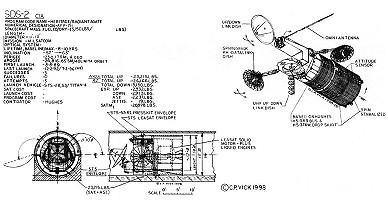 |
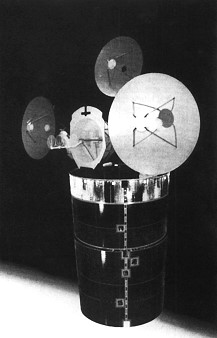 |
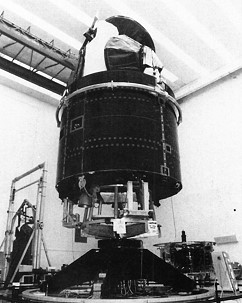 |
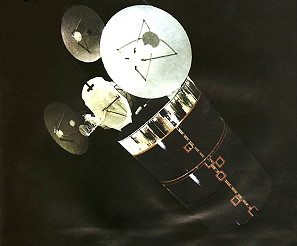 |
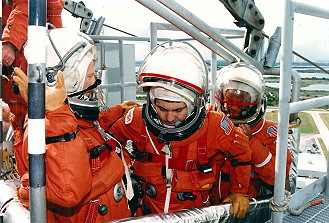 |
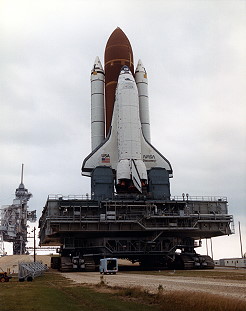 |
 |
 |
 |
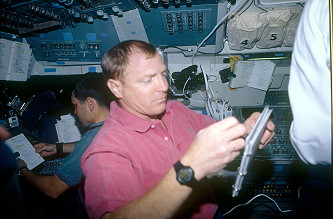 |
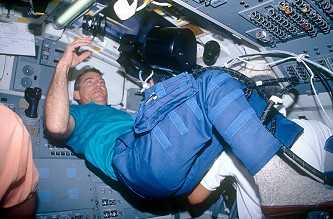 |
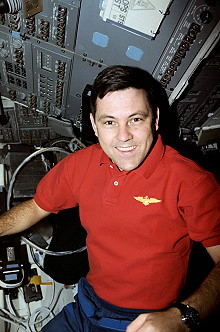 |
 |
| © |  |
Last update on June 19, 2023.  |
 |